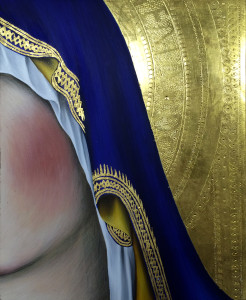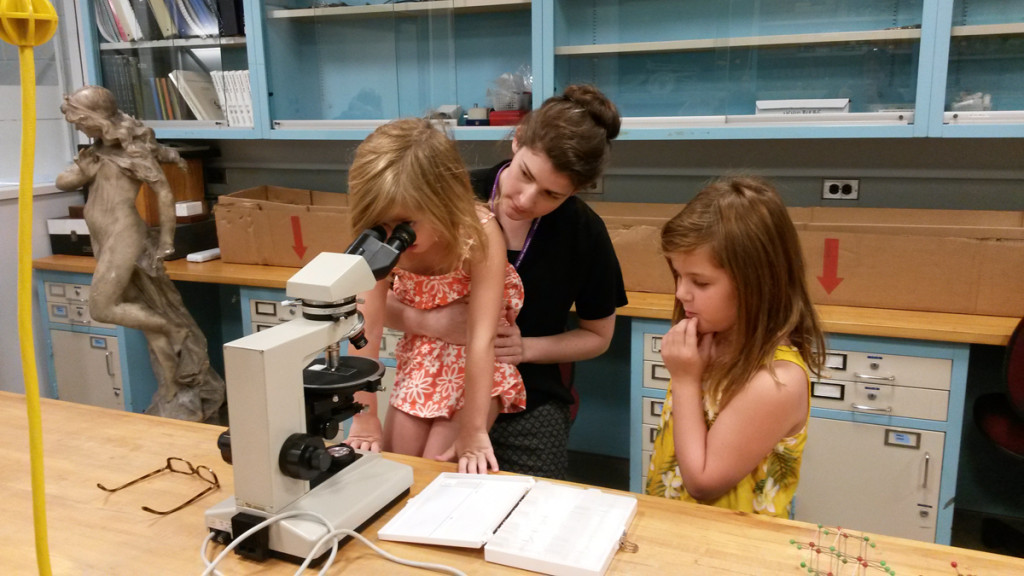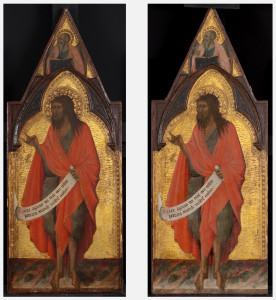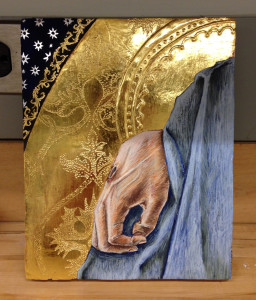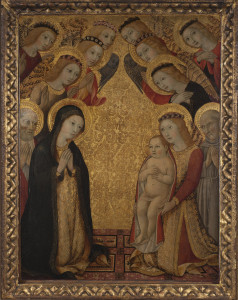by Chantal Stein
For a project in the course Technology and Structure of Works of Art, first-year conservation students made replicas of 15th century Italian panel paintings using traditional techniques and materials. This piece is a reproduction of a section from the Madonna and Child by the workshop of Sano di Pietro, at the Metropolitan Museum of Art. I chose this composition for its abstract qualities. The wood panel was sized with rabbit skin glue and prepared with gesso and bole for the application of water-gilding. For the painted passages, I used a mostly traditional pigment palette that included terra verde, yellow ocher, raw umber, bone black, sienna, titanium white, and (synthetic) ultramarine. Other techniques included mordant gilding and punchwork.
